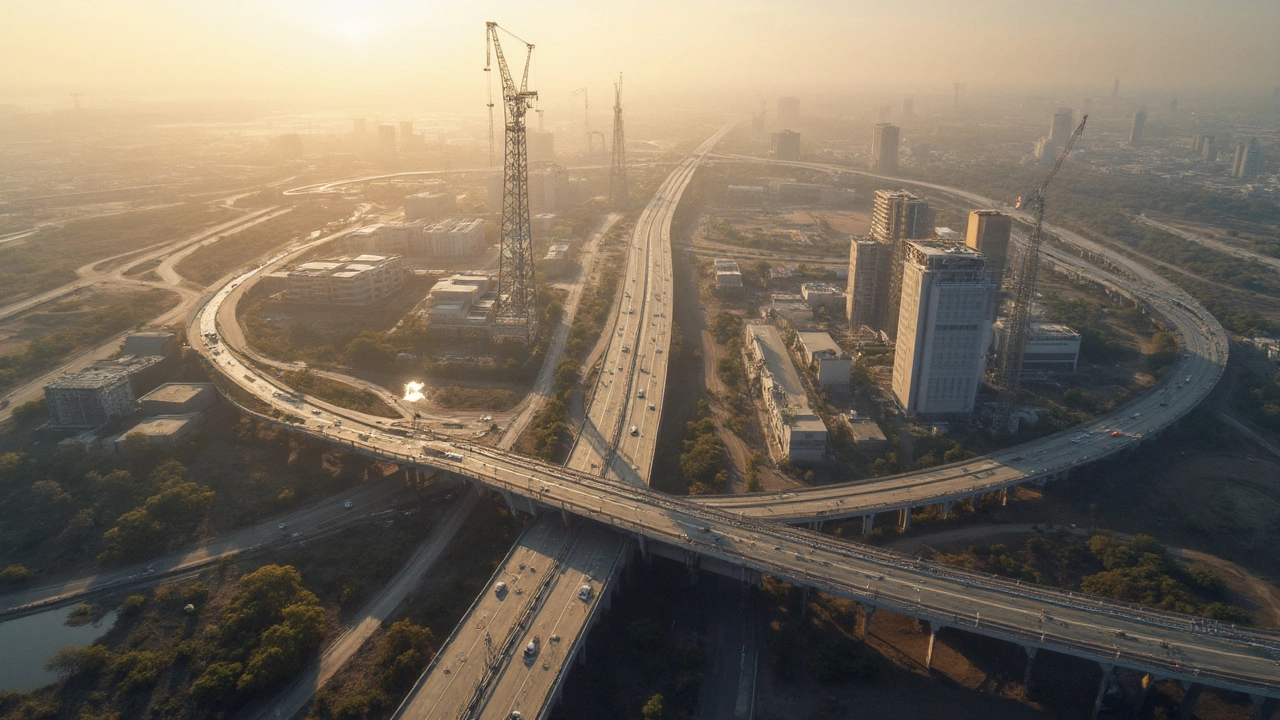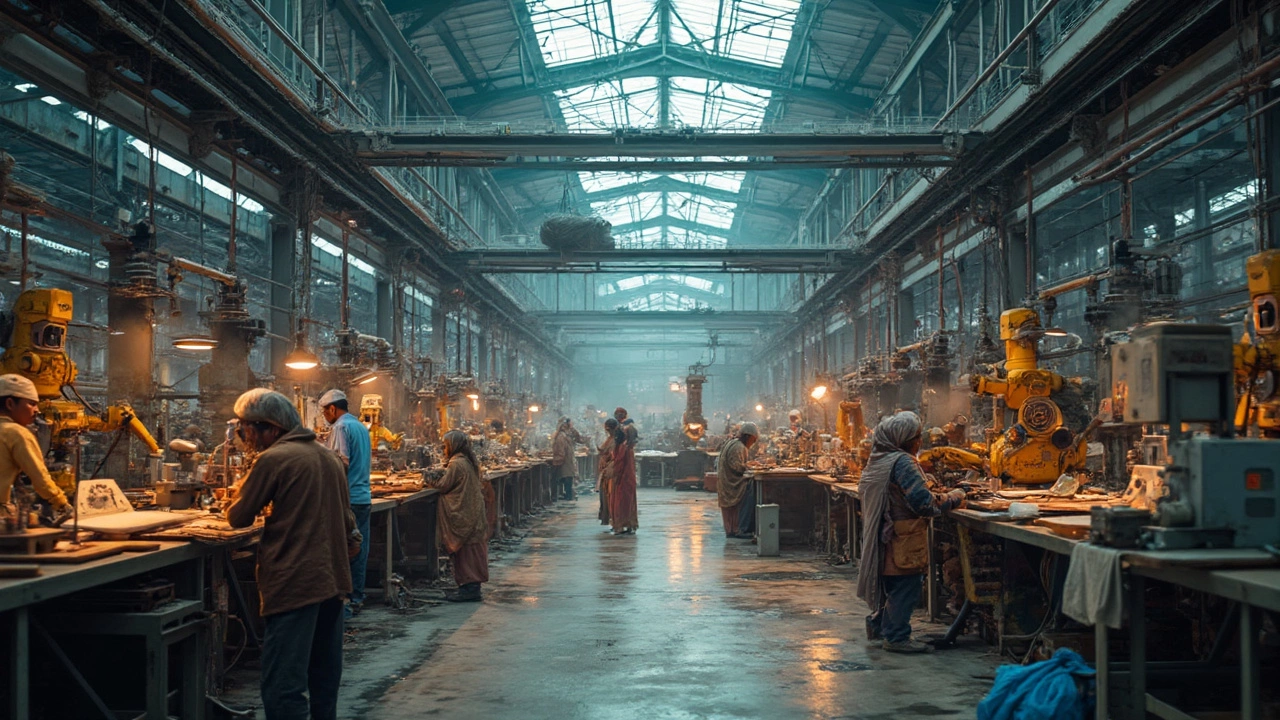Anyone who's dipped their toes into the manufacturing world knows it's not just about churning out products. Nope, it’s way more complex and exciting than stamping out widgets day in and day out. So, what's the secret sauce that keeps it ticking? Well, let's talk about these three mighty pillars: technology, workforce, and infrastructure. Picture them as the trio of superheroes, each with unique powers that work together to save the day—or in this case, keep the wheels of manufacturing turning smoothly.
Technology is like the turbo booster onsite. It's constantly evolving, bringing tools that increase efficiency, reduce waste, and just make stuff faster and better. Imagine walking into a factory that's using AI to streamline production processes. It's not sci-fi; it's happening now. On top of that, 3D printing is opening possibilities we couldn't dream of a decade ago. Nowadays, it's not just about keeping up—it's about leaping forward.
- The Role of Technology in Manufacturing
- Empowering the Workforce
- Importance of Infrastructure
- Government Support and Schemes
- Future Trends in Manufacturing
The Role of Technology in Manufacturing
Okay, let's dig into how technology is basically the backbone of modern manufacturing. It's no surprise that the adoption of new tech can make or break a company's edge in the game. From AI to robotics, these advancements are reshaping factories into sophisticated hubs of efficiency and precision.
First up, let's talk about AI. Now, AI isn't just for cool gadgets and apps—it's actually a big deal in the manufacturing space. Think about predictive maintenance. Companies are using AI to predict when machines might break down, saving heaps on repair and downtime, and keeping everything running like a well-oiled machine.
Then there's the rise of 3D printing. It's not just for making those cool custom T-shirts. In manufacturing, it's opening up new avenues for prototypes and small-batch production. This technology allows for faster production times and can really cut costs, especially in low-volume runs.
Imagine factories with interconnected, smart devices. Welcome to the world of the Internet of Things (IoT). IoT is hacking into manufacturing by linking up devices so they can talk to each other, share data, and streamline processes without a human having to step in.
Robotics is another big piece of this tech puzzle. We're talking about bots that can do the heavy lifting—literally. Robots today are smarter and more adaptable, handling everything from assembling complex gadgets to packaging items neatly. This tech isn't just making things faster; it's about precision and quality control that humans alone can't guarantee.
Here's a quick look at how these technologies are advancing:
| Technology | Current Impact | Future Potential |
|---|---|---|
| AI | Predictive maintenance, quality control | Smarter supply chain management |
| 3D Printing | Faster prototyping | Full-scale production |
| IoT | Interconnected devices | Autonomous factories |
| Robotics | Precision and efficiency | Flexible automation |
At the end of the day, embracing these technologies isn't just an option—it's essential for staying relevant. They're shaping the future, and anyone in the manufacturing world needs to jump on this wave to remain competitive.
Empowering the Workforce
When it comes to manufacturing, having a solid team of skilled workers is as crucial as the technology they use. You can have the fanciest machines around, but without the right people, it all falls flat. Think about training, upskilling, and creating a work environment where people actually want to be—that's what keeping a thriving workforce is all about.
One area that’s seeing some major focus is the investment in skills training. Governments are rolling out new schemes to help workers get the education they need. Imagine training programs that teach people not just the basics, but also offer courses on advanced tech like robotics and AI. That’s a game-changer.
But training isn’t just about new tech. Experienced workers are still crucial, and industries are starting to notice. They're combining the old with the new, finding ways for experienced pros to team up with fresh talent. This mentoring approach not only keeps the industry knowledge alive but also helps newer workers hit the ground running.
A lot of places are also pushing for diversity and inclusion. Studies show that diverse teams are more innovative and productive. In manufacturing, fostering an inclusive environment could mean the difference between just getting by and really thriving.
- Training Programs: Initiatives like ‘Skill India’ provide massive training opportunities across the country.
- Mentorship: Senior employees passing down valuable industry know-how.
- Diversity Initiatives: Ensuring different perspectives lead to better problem-solving.
Finally, let’s talk quality of life. Happy workers mean productive workers. Modern companies invest not only in professional growth but also in personal well-being—think work-life balance and mental health support programs.
When these strategies combine, they create a powerhouse workforce that's built to handle whatever the future of manufacturing throws its way.

Importance of Infrastructure
Alright, let’s get into why infrastructure is like the backbone of the manufacturing world. Imagine trying to build a house on shaky ground—not a great idea, right? The same goes for manufacturing. Without solid infrastructure, everything else comes crumbling down.
For starters, reliable transportation networks are crucial. Good roads, efficient railways, and easy shipping routes make it possible to move raw materials and finished products without a hitch. And hey, it’s not just about roads and railways. We’re talking ports and airports too! The ability to quickly ship products across the country or even the world means manufacturers can reach more customers and secure a steady flow of materials.
Then there’s the matter of energy. Manufacturing plants are energy hogs, needing a ton of power to run those machines. Having a consistent, affordable energy source is a game changer. Imagine running a factory on unreliable electricity—constant shutdowns would be a nightmare.
Let’s not forget about digital infrastructure. With technology playing a big role, strong internet connectivity is as essential as a steady power supply. Think about smart factories, IoT devices, and cloud-based operations. They all rely on fast, reliable internet connections to function smoothly.
Governments often step in to support these infrastructure needs. There are countless schemes aimed at improving transportation, power supply, and digital connectivity. This ensures the manufacturing sector can stay competitive in today’s fast-paced environment.
To put numbers on this importance, let's look at a quick stat: According to a 2024 industry report, every $1 billion invested in transportation infrastructure creates nearly 13,000 jobs related to manufacturing and construction sectors. That's a significant boost, right?
Government Support and Schemes
In the twisty world of manufacturing, having a little help from Uncle Sam—or whichever government you're dealing with—can make all the difference. There’s no shortage of government schemes designed to give manufacturing a boost. They're like that safety net you didn’t know you needed until you fall. And trust me, in business, everyone falls sometime.
First off, let’s chat about tax incentives. Governments often roll out tax credits or deductions specifically for manufacturers who invest in new technology or employee training. It's like getting a high-five for doing things that already help your business. Who wouldn't want that?
There are also grants and funding programs aimed at innovation. Countries around the world have realized that the faster they embrace new tech, the stronger their industry grows. So, they throw money at manufacturers daring to experiment with stuff like AI, robotics, or next-gen materials. It's not about finding a needle in a haystack—more like a golden ticket for the right ideas.
Not to forget, we’ve got infrastructure-focused programs. The government sometimes steps in to improve roads, ports, and communication systems—just to smooth out the kinks in the supply chain. It's like giving your whole logistics system a tune-up for free.
And oh boy, workforce development schemes are a biggie. Training and reskilling programs get special attention, especially when industries are shifting gears quickly. Ensuring there's a steady flow of skilled workers is essential. These programs are like custom-fit suits for the industry—tailored exactly to what’s required.
To seal the deal, some governments also engage in international trade partnerships to open new markets for manufacturers. Picture your product in shops across three continents. Sounds dreamy, right?
Bottom line: whether it's tax breaks, funding, or skill support, government schemes are here to keep the gears well-oiled in the ever-evolving manufacturing landscape.

Future Trends in Manufacturing
Looking ahead, manufacturing is gearing up for some wild rides. Picture this: smart factories buzzing with artificial intelligence, sensors everywhere collecting data quicker than your phone can buffer a video, and robots whizzing around doing complex jobs. Already sounds cool, right? But it’s not just sci-fi anymore; it’s how manufacturing is evolving even as we speak.
One trend that's grabbing attention is digital twins. These digitized replicas of physical products or processes basically let engineers play ‘what if’ scenarios in a virtual space without risking real-world disasters. Imagine simulating a new aircraft engine design digitally before making a single real part. It's a game-changer for improving efficiency and cutting costs!
Then there’s the Internet of Things (IoT). You know, stuff that’s connected to the Internet to gather and share data. In the supply chain, IoT sensor-laden devices can track product conditions in real time. Is the package too hot? Too cold? You'll know instantly, reducing wastage and ensuring products are top-notch.
And we can't ignore sustainability. Going green isn't just a trendy slogan anymore; it’s becoming a manufacturing standard. Companies are tweaking processes to minimize waste, lower emissions, and use renewable energy sources. Imagine factories powered by solar panels, recycling more materials than ever before. It makes business sense ’cause eco-friendly practices can mean fewer penalties and happier customers.
Lastly, let's talk about human-robot collaboration. Forget the sci-fi movie where robots take over humans. It's more about robots taking on the tedious, repetitive tasks so people can focus on creative and strategic work. It's like having a super-helpful assistant that never gets tired!
- AI and Machine Learning: Revolutionizing how products are designed and manufactured.
- 3D Printing: Speeding up prototyping and production, making low-volume manufacturing feasible.
- Blockchain: Improving transparency and traceability in the supply chain to counter fraud and errors.
There's more to this industry than meets the eye, and government schemes are playing catch-up to support these growing trends. As these elements come together, the future of manufacturing looks not just promising but downright exciting.
| Trend | Impact |
|---|---|
| Digital Twins | Enhances design accuracy and efficiency |
| IoT | Real-time data for improved supply chain management |
| Sustainability | Reduces environmental impact |
| Human-Robot Collaboration | Boosts productivity and job satisfaction |
